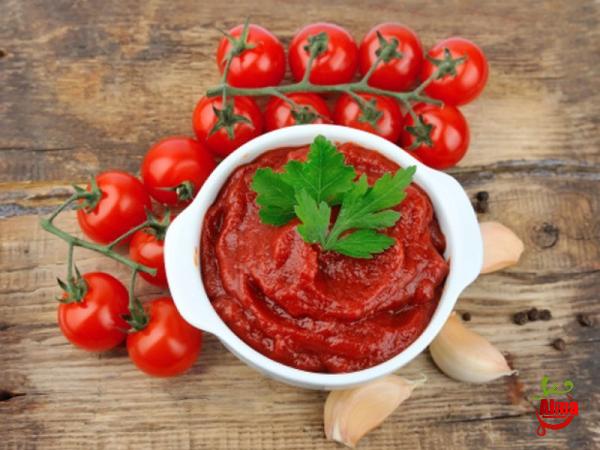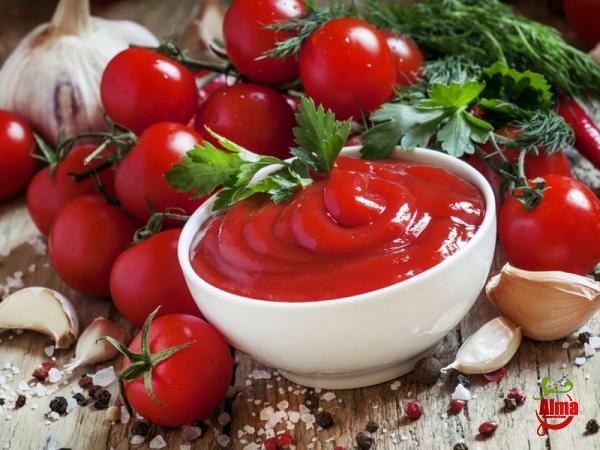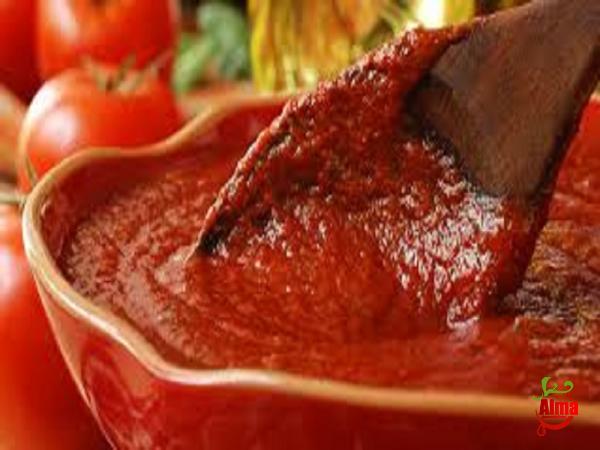Tips and Techniques for a Flavorful Culinary Creation Introduction: Tomato pasta sauce is a versatile and delicious staple in numerous cuisines worldwide. While many prefer a thick and rich tomato sauce, achieving the desired consistency can sometimes be a challenge for home cooks. This article aims to provide insightful tips and techniques for thickening tomato pasta sauce, whether you’re a beginner or a seasoned chef. We will explore both natural and artificial thickeners, as well as flavor-enhancing ingredients, ensuring that your sauce becomes a delectable complement to any pasta dish. 1. Understanding the Importance of Thickening: Thickening tomato pasta sauce not only improves its texture but also helps it cling better to pasta, enhancing flavor absorption. A thicker sauce also holds up well when used as a base for other recipes, such as lasagna or baked pasta dishes. It adds depth and richness to the overall taste, making it more satisfying and enjoyable. 2. Natural Thickeners for Tomato Pasta Sauce: 2.1 Tomato Paste: Tomato paste is a concentrated form of tomatoes that helps naturally thicken pasta sauce. Adding a few tablespoons of tomato paste to the sauce increases its viscosity, intensifies the tomato flavor, and deepens the color. 2.2 Onions, Garlic, and Vegetables: Sautéing finely chopped onions, garlic, and vegetables in olive oil before adding tomatoes can also thicken the sauce naturally. Onions and garlic release their natural sugars, which caramelize and give the sauce a thicker texture. Additionally, vegetables like carrots, bell peppers, and mushrooms can be finely diced and added to the sauce, providing both flavor and texture. 2.3 Cooking Method: Simmering the sauce over low heat for a longer duration allows the tomatoes to break down and release moisture, resulting in a thicker consistency. This method helps evaporate excess water and concentrates the flavors, enhancing the overall taste of the sauce. 3. Consider Artificial Thickeners: 3.1 Cornstarch: Cornstarch is a common pantry staple that can be used to thicken tomato pasta sauce. To avoid clumping, create a slurry by mixing cornstarch with a small amount of water before adding it to the sauce. Cornstarch thickens quickly, so it’s essential to only use a small amount and simmer the sauce to activate its thickening properties. 3.2 Flour Roux: Another option is to create a flour roux by mixing equal parts flour and fat (such as butter or olive oil) over low heat. Incorporating this roux into the sauce will help thicken it gradually. However, it’s important to cook the roux thoroughly to remove the raw flour taste. 3.3 Arrowroot Powder: Arrowroot powder is a gluten-free alternative to cornstarch and can be used to thicken tomato pasta sauce. Mix the arrowroot powder with a small amount of cold water to create a slurry and then add it to the sauce. Arrowroot powder thickens rapidly, so it’s important to avoid overcooking it, as this can lead to a jelly-like consistency.

tomato paste
 4. Flavor-Enhancing Ingredients: 4.1 Herbs and Spices: Incorporating a combination of herbs and spices enhances the flavor profile of your tomato pasta sauce. Basil, oregano, thyme, and bay leaves are traditional choices, while red pepper flakes or chili powder can add a kick of heat. Experiment with different combinations to find your preferred taste. 4.2 Parmesan Cheese: Adding grated Parmesan cheese to the sauce not only enhances its flavor but also aids in thickening. The cheese melts and binds with the other ingredients, resulting in a smoother and creamier texture. 4.3 Red Wine: The addition of red wine to tomato pasta sauce can give it an extra depth of flavor and help thicken the sauce naturally. Allow the wine to simmer alongside the other ingredients to dissipate the alcohol and intensify the taste. 5. Cooking Techniques for Thickening: 5.1 Reduce the Sauce: Simmering the sauce with the lid off allows excess moisture to evaporate, resulting in a thicker consistency. Remember to stir occasionally to prevent the sauce from sticking to the bottom of the pot. 5.2 Pureed Vegetables: For a unique twist, puree a portion of the sauce in a blender or use an immersion blender. This technique thickens the sauce while maintaining its vibrant color and natural flavors. 5.3 Adding Bread Crumbs: A traditional method to thicken pasta sauce is to incorporate bread crumbs gradually. Soak the bread crumbs in the sauce until they break down and blend in seamlessly, resulting in a hearty and thick texture. Conclusion: Thickening tomato pasta sauce allows it to become a luscious base for an array of pasta dishes while intensifying its flavor. Whether you prefer natural thickeners like tomato paste or onions, or artificial thickeners like cornstarch or flour roux, experimenting with various techniques and flavor-enhancing ingredients can elevate your tomato sauce to new culinary heights. With the tips outlined in this article, you can create a tantalizing, thick tomato pasta sauce that will impress family and friends with every bite.Thickening Tomato Pasta Sauce: Techniques for Culinary Success I. Introduction: – Briefly recap the importance of thickening tomato pasta sauce and its impact on flavor and texture. II. The Science of Sauce Thickening: – Explore the science behind thickening agents and how they work in tomato sauce. – Explain how natural thickeners like tomato paste and sautéed vegetables release starches and sugars that contribute to a thicker consistency. – Discuss how artificial thickeners like cornstarch and arrowroot powder bind with liquid to create a thicker sauce.
4. Flavor-Enhancing Ingredients: 4.1 Herbs and Spices: Incorporating a combination of herbs and spices enhances the flavor profile of your tomato pasta sauce. Basil, oregano, thyme, and bay leaves are traditional choices, while red pepper flakes or chili powder can add a kick of heat. Experiment with different combinations to find your preferred taste. 4.2 Parmesan Cheese: Adding grated Parmesan cheese to the sauce not only enhances its flavor but also aids in thickening. The cheese melts and binds with the other ingredients, resulting in a smoother and creamier texture. 4.3 Red Wine: The addition of red wine to tomato pasta sauce can give it an extra depth of flavor and help thicken the sauce naturally. Allow the wine to simmer alongside the other ingredients to dissipate the alcohol and intensify the taste. 5. Cooking Techniques for Thickening: 5.1 Reduce the Sauce: Simmering the sauce with the lid off allows excess moisture to evaporate, resulting in a thicker consistency. Remember to stir occasionally to prevent the sauce from sticking to the bottom of the pot. 5.2 Pureed Vegetables: For a unique twist, puree a portion of the sauce in a blender or use an immersion blender. This technique thickens the sauce while maintaining its vibrant color and natural flavors. 5.3 Adding Bread Crumbs: A traditional method to thicken pasta sauce is to incorporate bread crumbs gradually. Soak the bread crumbs in the sauce until they break down and blend in seamlessly, resulting in a hearty and thick texture. Conclusion: Thickening tomato pasta sauce allows it to become a luscious base for an array of pasta dishes while intensifying its flavor. Whether you prefer natural thickeners like tomato paste or onions, or artificial thickeners like cornstarch or flour roux, experimenting with various techniques and flavor-enhancing ingredients can elevate your tomato sauce to new culinary heights. With the tips outlined in this article, you can create a tantalizing, thick tomato pasta sauce that will impress family and friends with every bite.Thickening Tomato Pasta Sauce: Techniques for Culinary Success I. Introduction: – Briefly recap the importance of thickening tomato pasta sauce and its impact on flavor and texture. II. The Science of Sauce Thickening: – Explore the science behind thickening agents and how they work in tomato sauce. – Explain how natural thickeners like tomato paste and sautéed vegetables release starches and sugars that contribute to a thicker consistency. – Discuss how artificial thickeners like cornstarch and arrowroot powder bind with liquid to create a thicker sauce.
Specifications of tomato paste
 III. Natural Thickeners: 1. Tomato Paste: – Explain how tomato paste, a concentrated form of tomatoes, adds thickness, intensifies flavor, and deepens the color of the sauce. – Provide tips on how to incorporate tomato paste into the sauce effectively. 2. Sautéed Onions, Garlic, and Vegetables: – Discuss the benefits of sautéing onions, garlic, and vegetables before adding tomatoes. – Highlight how the caramelization of natural sugars in these ingredients adds thickness and flavor to the sauce. 3. Cooking Method: – Explain the benefits of simmering the sauce over low heat for a longer duration. – Discuss how this method helps evaporate excess water, concentrates flavors, and creates a thicker sauce. IV. Artificial Thickeners: 1. Cornstarch: – Provide instructions on creating a cornstarch slurry and explain its thickening properties. – Advise caution in using a small amount of cornstarch to avoid an overly thick sauce. 2. Flour Roux: – Guide readers on how to create a flour roux and incorporate it into the sauce. – Emphasize the importance of cooking the roux thoroughly to remove the raw flour taste. 3. Arrowroot Powder: – Discuss the suitability of arrowroot powder as a gluten-free thickening agent. – Describe the process of creating an arrowroot powder slurry and its quick thickening properties. V. Flavor Enhancements: 1. Herbs and Spices: – Suggest a variety of herbs and spices to enhance the flavor profile of tomato pasta sauce. – Provide recommendations on incorporating these ingredients into the sauce. 2. Parmesan Cheese: – Explain how grated Parmesan cheese not only enhances flavor but also aids in thickening the sauce. – Discuss the process of incorporating Parmesan cheese to achieve a smoother and creamier texture.
III. Natural Thickeners: 1. Tomato Paste: – Explain how tomato paste, a concentrated form of tomatoes, adds thickness, intensifies flavor, and deepens the color of the sauce. – Provide tips on how to incorporate tomato paste into the sauce effectively. 2. Sautéed Onions, Garlic, and Vegetables: – Discuss the benefits of sautéing onions, garlic, and vegetables before adding tomatoes. – Highlight how the caramelization of natural sugars in these ingredients adds thickness and flavor to the sauce. 3. Cooking Method: – Explain the benefits of simmering the sauce over low heat for a longer duration. – Discuss how this method helps evaporate excess water, concentrates flavors, and creates a thicker sauce. IV. Artificial Thickeners: 1. Cornstarch: – Provide instructions on creating a cornstarch slurry and explain its thickening properties. – Advise caution in using a small amount of cornstarch to avoid an overly thick sauce. 2. Flour Roux: – Guide readers on how to create a flour roux and incorporate it into the sauce. – Emphasize the importance of cooking the roux thoroughly to remove the raw flour taste. 3. Arrowroot Powder: – Discuss the suitability of arrowroot powder as a gluten-free thickening agent. – Describe the process of creating an arrowroot powder slurry and its quick thickening properties. V. Flavor Enhancements: 1. Herbs and Spices: – Suggest a variety of herbs and spices to enhance the flavor profile of tomato pasta sauce. – Provide recommendations on incorporating these ingredients into the sauce. 2. Parmesan Cheese: – Explain how grated Parmesan cheese not only enhances flavor but also aids in thickening the sauce. – Discuss the process of incorporating Parmesan cheese to achieve a smoother and creamier texture.
buy tomato paste
 3. Red Wine: – Discuss how adding red wine to tomato pasta sauce can deepen its flavor profile and aid in thickening. – Provide guidelines on simmering the wine to dissipate alcohol and enhance taste. VI. Cooking Techniques: 1. Reducing the Sauce: – Explain the process of simmering the sauce with the lid off to help evaporate excess moisture and achieve a thicker consistency. – Provide tips on stirring occasionally to prevent the sauce from sticking to the pot. 2. Pureed Vegetables: – Describe how blending a portion of the sauce can thicken it while maintaining its vibrant color and natural flavors. – Suggest vegetables that work well when pureed and provide tips on achieving the desired texture. 3. Adding Bread Crumbs: – Discuss the traditional technique of adding bread crumbs to thicken pasta sauce. – Explain how soaking the bread crumbs in the sauce helps them break down and blend in seamlessly. VII. Conclusion: – Recap the various techniques and tips discussed in the article for thickening tomato pasta sauce. – Encourage readers to experiment, find their preferred methods, and create a delectable, thick tomato pasta sauce that will elevate their culinary creations.
3. Red Wine: – Discuss how adding red wine to tomato pasta sauce can deepen its flavor profile and aid in thickening. – Provide guidelines on simmering the wine to dissipate alcohol and enhance taste. VI. Cooking Techniques: 1. Reducing the Sauce: – Explain the process of simmering the sauce with the lid off to help evaporate excess moisture and achieve a thicker consistency. – Provide tips on stirring occasionally to prevent the sauce from sticking to the pot. 2. Pureed Vegetables: – Describe how blending a portion of the sauce can thicken it while maintaining its vibrant color and natural flavors. – Suggest vegetables that work well when pureed and provide tips on achieving the desired texture. 3. Adding Bread Crumbs: – Discuss the traditional technique of adding bread crumbs to thicken pasta sauce. – Explain how soaking the bread crumbs in the sauce helps them break down and blend in seamlessly. VII. Conclusion: – Recap the various techniques and tips discussed in the article for thickening tomato pasta sauce. – Encourage readers to experiment, find their preferred methods, and create a delectable, thick tomato pasta sauce that will elevate their culinary creations.









Your comment submitted.